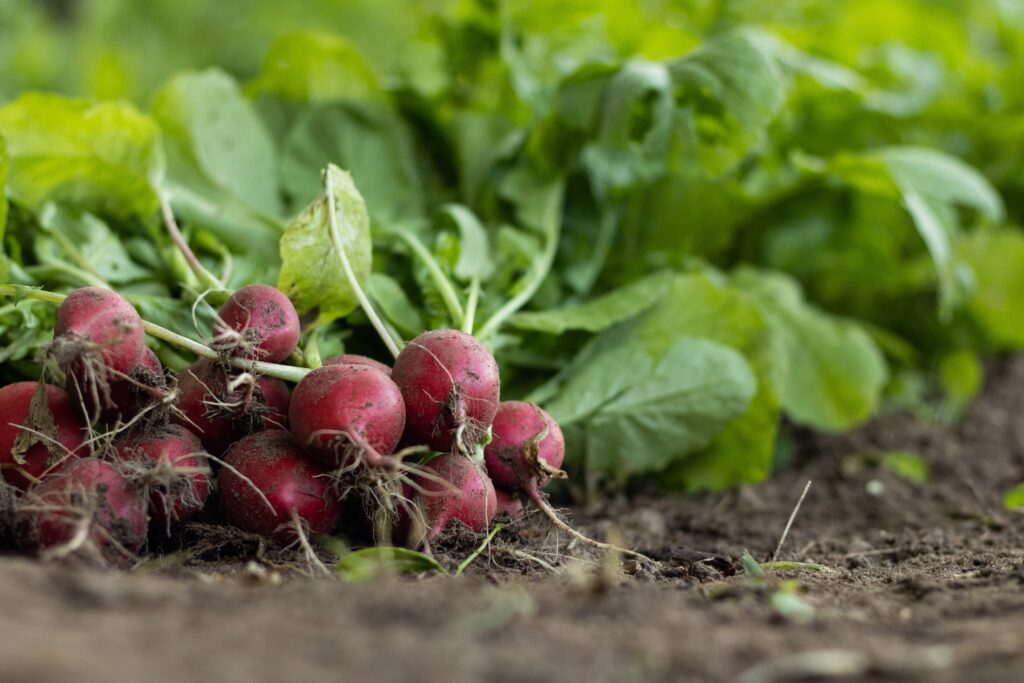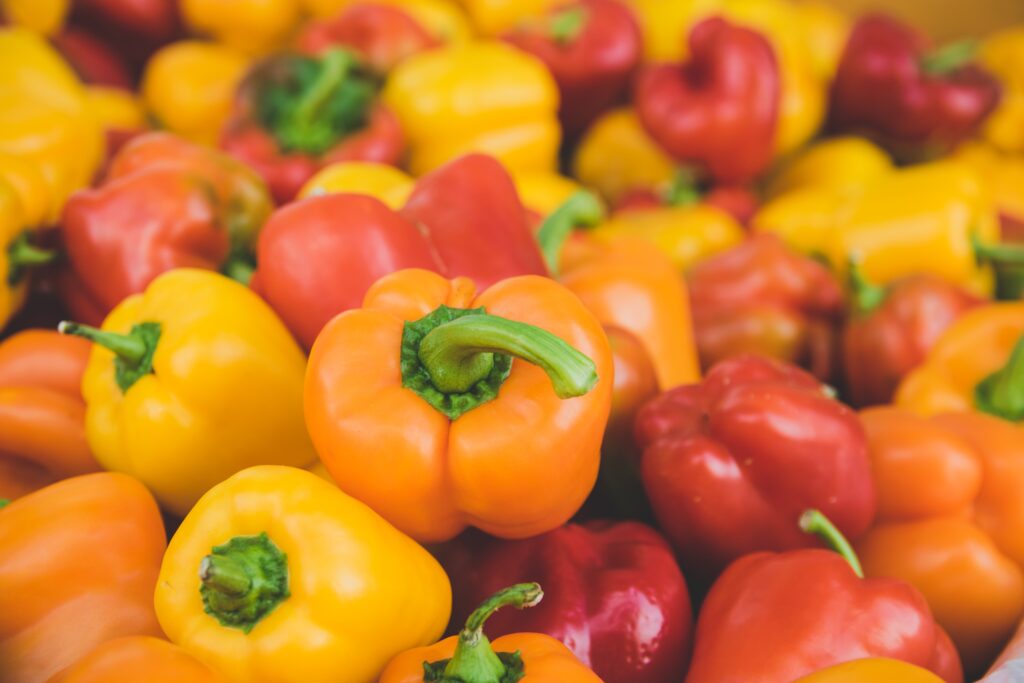Top Powerful Vegetables: You Need For Your Diet!

The top powerful vegetables are the unsung heroes of our plates, often overshadowed by other food groups. Vegetables, vital for health and taste, offer diverse benefits. We’ll uncover their importance in our diet and culinary versatility.
Significance of Vegetables in Our Diet
Unveiling the Vital Role of Top Powerful Vegetables in Diet
Top powerful vegetables or foods nutrient-rich, they boost well-being. Their high fiber content aids digestion and promotes a feeling of fullness, which can be a boon for weight management. Veggies offer crucial vitamins (C, A), minerals (potassium), and antioxidants for health and disease prevention. The phytonutrients found in colorful vegetables are known for their anti-inflammatory and disease-fighting properties. Incorporating a variety of vegetables into your diet is a surefire way to boost your immune system and promote longevity.
The Versatility of Vegetables in Various Cuisines and Dishes
Top Foods and Vegetables
Exploring powerful foods and vegetables, what makes vegetables truly extraordinary is their versatility in the culinary world. They can be transformed into a stunning array of dishes, from savory to sweet, from around the globe. Vegetables shine in diverse global dishes, from Italian pasta primavera to Indian curry, adding vibrant colors and flavors. Top powerful vegetables or foods can be roasted, grilled, sautéed, or simply enjoyed fresh in a salad. They serve as a canvas for culinary creativity, allowing you to experiment with different herbs, spices, and cooking techniques. From the humble potato to the exotic eggplant, there’s no limit to the culinary wonders that vegetables can inspire.
Leafy Greens
Leafy greens, nutritional powerhouses from nature, deserve a prominent place in your diet among top powerful vegetables and foods. They offer health benefits with abundant vitamins, minerals, and antioxidants.

Overview of Top Leafy Greens and Their Nutritional Benefits
Powerful Top Leafy Greens Vegetables
Top powerful leafy greens vegetables foods encompass a wide array of vibrant, green-hued vegetables known for their exceptional health properties. Some key nutritional benefits include:
Vitamins: Leafy greens boast vitamins A, C, and K. These vitamins play a vital role in supporting a healthy immune system, bone health, and skin rejuvenation.
Minerals: Nature’s treasure trove of calcium, iron, and magnesium promotes bone health and vitality.
Fiber: Packed with fiber, leafy greens aid digestion, promote fullness, and assist in managing weight for improved health.
Antioxidants: Their antioxidants help fight free radicals in the body, potentially reducing the risk of chronic diseases.
Most Popular Top Powerful Leafy Greens Vegetables: Spinach, Kale, and Lettuce
Spinach: This versatile, powerful, and popular green leafy vegetable food is a nutritional superstar. It’s renowned for its high iron content, which can boost energy levels. Spinach can be used in salads, smoothies, sandwiches, and even sautéed as a side dish.
Kale: Kale boasts impressive vitamin K content and stands out for its potent anti-inflammatory attributes. It’s commonly used in salads, as kale chips, or blended into green smoothies.
Lettuce: Lettuce is a classic choice for salads, sandwiches, and wraps. With its high water content, it delivers hydration in contrast to the stronger flavor of kale and spinach.
Culinary Uses and Recipes
Culinary uses and recipes for leafy greens can be enjoyed in various culinary creations, adding freshness and nutrition to your meals. Take a look at these recipe concepts to get you started:
Spinach and Feta Stuffed Chicken: Elevate chicken with spinach, feta, and herbs for a tasty, nutritious stuffing.
Kale and Berry Smoothie: Mix kale, berries, yogurt, and honey for a tasty, healthy morning smoothie.
Grilled Romaine Salad: Cut romaine lettuce in half, brush with olive oil, and grill for a smoky, satisfying salad. Top with your favorite dressings and toppings.
Incorporating leafy greens into your diet can bring a burst of flavor, nutrition, and vibrancy to your daily meals. Don’t miss out on the numerous health benefits and culinary delights these greens have to offer.
Root Vegetables
Second-top powerful vegetables or foods are root vegetables, a nutritional powerhouse and culinary delight, enriching your diet with unique nutrients.

Characteristics of Root Vegetables
Root vegetables are known for their distinctive features. They’re firm, starchy, ideal for roasting, mashing, or soups and stews. Their rich, earthy flavors can range from sweet to mildly peppery, offering versatility in culinary applications.
Examples of Root Vegetables
Carrots: Carrots, with their vibrant orange hue, are a rich source of beta-carotene, which supports eye health. Enjoy them raw, roasted, or in soups and salads.
Potatoes: Potatoes are a beloved staple worldwide, offering comfort and sustenance. They come in various types, from the creamy-textured Yukon Gold to the starchy Russet, perfect for baking or frying.
Beets: Beets are vibrant, sweet, antioxidant-rich delights for salads and roasts.
Preparing and Cooking Root Vegetables
Preparing and cooking root vegetables is a straightforward process. Start by washing and peeling them, if necessary. Next, explore a variety of culinary techniques to savor their delicious tastes.
Roasting: Roasting root vegetables brings out their natural sweetness and creates a crispy exterior.
Mashing: Boil or steam root veggies, mash with butter, and season for a creamy side dish or puree.
Soups and Stews: Add diced root veggies to soups and stews for enhanced nutrition and flavor depth.
Frying: Sliced, fried, and baked sweet potatoes, a root vegetable, provide a healthier substitute.
Root vegetables enrich dishes with nutrients, flavors, and textures, from roasts to comforting soups, for delicious and healthful meals. Make them a regular part of your diet, and savor the benefits of these humble yet extraordinary vegetables.
Cruciferous Vegetables
Third top powerful vegetables or foods are cruciferous veggies, veggie superstars, power your diet and wellness. Discover the definition, benefits, examples, and tasteful recipes.

Explanation of Cruciferous Vegetables and Their Health Benefits
Cruciferous vegetables belong to the Brassicaceae family and have health benefits. These benefits include:
Cancer-Fighting Properties: Cruciferous vegetables are rich in phytochemicals and antioxidants, which may help reduce the risk of certain types of cancer.
Nutrient Density: Great source of vitamins like C, and K, and minerals.
Digestive Health: High fiber content aids digestion and promotes a healthy gut.
Weight Management: Low in calories, can aid in weight management, high fiber, and water content.
Common Cruciferous Vegetables
Common cruciferous vegetables that you can easily find in your local market include broccoli, cauliflower, Brussels sprouts, kale, cabbage, and arugula. Each of these vegetables comes with its unique set of flavors and textures, offering a diverse range of culinary possibilities.
Delicious Ways to Incorporate Cruciferous Vegetables into Meals
Incorporating cruciferous vegetables into your meals doesn’t have to be bland or boring. Here are some tasty suggestions:
Roasted Brussels Sprouts: To prepare this dish, start by tossing Brussels sprouts with olive oil, garlic, and a pinch of sea salt. In this scenario, you’ll roast the veggies until they’re crispy or caramelized.
Broccoli Stir-Fry: Combine broccoli with colorful bell peppers and your choice of protein, stir-fry with a savory sauce, and serve over rice or noodles.
Cauliflower Mash: Create a creamy and healthier alternative to mashed potatoes by pureeing steamed cauliflower with a touch of butter and seasoning.
Kale and Avocado Salad: Massage kale leaves with avocado, lemon juice, and your favorite salad toppings for a nutrient-packed and refreshing dish.
Cabbage Rolls: A hearty, comfortable supper can be made by stuffing cabbage leaves with a tasty mixture of ground pork and rice and simmering them in a tomato-based sauce.
By adopting cruciferous veggies and incorporating them into your daily menu, you may improve your nutritional intake while also improving the taste of your meals. These vegetables are a flexible complement to any menu, whether they are roasted, sautéed, or made into a smoothie.
Allium Vegetables
Fourth top powerful vegetables or foods are allium vegetables, a diverse and aromatic group of veggies, that play a crucial role in elevating the flavors of countless dishes. In this exploration, we’ll delve into the world of allium vegetables, uncovering their unique flavor profiles, providing examples, and sharing insights into their uses across various cuisines along with some culinary tips.

Exploring the Flavor Profiles of Allium Vegetables
Exploring the flavor profiles of allium vegetables are a botanical family that encompasses a wide range of flavors and culinary uses. Their defining feature is a pungent, savory, and often slightly sweet taste. The characteristic flavor of allium vegetables comes from sulfur-containing compounds, which can range from mild to intense.
Examples of Allium Vegetables
Onions: Versatile and foundational in countless recipes, onions come in various types, including sweet onions, red onions, and yellow onions. They add depth and complexity to soups, stews, and stir-fries.
Garlic: Known for its robust flavor, garlic is an essential ingredient in cuisines worldwide. Fresh or roasted, it adds an earthy richness to dishes.
Leeks: While these vegetables have a flavor that is less delicate than onion or garlic, it is still quite light. Common in soups and potato dishes for a delicate, aromatic flair.
Uses in Various Cuisines and Culinary Tips
Allium vegetables are integral to a multitude of culinary traditions.
They feature in various cuisines:
Italian Cuisine: Garlic and onions are key ingredients in Italian dishes, enhancing the flavors of pasta sauces, risottos, and pizzas.
Asian Cuisine: Scallions, a versatile allium in Asian dishes. Garlic and ginger are prevalent in many savory dishes.
French Cuisine: Shallots, part of the allium family, add subtle onion flavor to French sauces and vinaigrettes.
Culinary Tips for Working with Allium Vegetables:
- Ensure to thoroughly soak raw onions or garlic in cold water to mellow the flavor.
- Allium veggies should be slowly sautéed over low heat to allow their sugars to escape and provide a sweet, caramelized flavor.
- To preserve the delicate taste of leeks, slice them thinly and rinse them thoroughly to remove any dirt or grit.
- Experiment with different types of allium vegetables to discover new flavor profiles and elevate your dishes.
Bell Peppers and Nightshades
The fifth top powerful vegetables or foods are bell peppers, and nightshades are a vibrant and interesting group of vegetables that play a pivotal role in the culinary world. These vegetables come in a rainbow of colors and flavors, making them a pleasurable addition to a variety of dishes

Different Types of Bell Peppers and Their Colors
Bell peppers, scientifically known as Capsicum annuum, come in an array of colors, each offering a unique flavor and nutritive profile. The most typical varieties of bell peppers include
Green Bell Peppers: Crisp and slightly bitter, green bell peppers are frequently used in salads, stir-feasts, and as a brickle dip for snacks.
Red Bell Peppers: With their sweet, nearly gooey flavor, red bell peppers are perfect for riding, grilling, or enjoying fresh salads.
Yellow Bell Peppers: These peppers have a mild, sunny taste and are fantastic in Mediterranean dishes, salsas, and stir-feasts.
Orange Bell Peppers: Additionally, orange bell peppers, which are distinguished from their red counterparts by having a slightly sweeter flavor, give dishes a brilliant color as well as a pleasant flavor.
Grandiloquent and Black Bell Peppers: These lesser-known kinds offer a rich, earthy flavor and are great for gourmet recipes and unique presentations.
Culinary Uses and Exploration of Nightshade Vegetables
Bell peppers, although they aren’t spicy like some nightshades, belong to the nightshade family of vegetables, which also includes tomatoes, eggplants, and potatoes. Nightshades are known for their versatility in the kitchen, offering a wide range of culinary possibilities.
Tomatoes: A staple in countless cuisines, tomatoes feature prominently in sauces, soups, and salads, as well as as a base for pizza and pasta.
Eggplants: With their creamy texture and mild taste, eggplants are perfect for creating dishes like eggplant parmesan, baba ghanoush, and ratatouille.
Exploring nightshade vegetables not only adds depth and flavor to your cooking but also provides a range of nutrients and antioxidants. These versatile ingredients can elevate your culinary creations while promoting a healthy and balanced diet.
Incorporating a wide variety of vegetables into your daily diet is a simple yet powerful way to boost your overall well-being. Vegetables are nutrient-rich, low in calories, and packed with essential vitamins, minerals, and fiber, making them a vital component of a balanced and healthy diet. We’ll explore the incredible health benefits that a diverse range of vegetables can offer and how they can support weight management and your overall health.
Consuming a Variety of Vegetables Has Health Benefits
Enhanced Immune System: Vegetables are loaded with vitamins and antioxidants, such as vitamin C and beta-carotene, which help strengthen your immune system and protect your body against infections and diseases.
Cardiovascular Health: Many vegetables, especially leafy greens, are heart-healthy. They can lower blood pressure, reduce cholesterol levels, and promote overall cardiovascular health.
Digestive Health: The high fiber content in vegetables aids digestion, prevents constipation, and supports a healthy gut microbiome. Fiber also plays a crucial role in maintaining a feeling of fullness, making it easier to manage your weight.
Cancer Prevention: Certain vegetables, particularly cruciferous ones like broccoli and Brussels sprouts, are associated with a reduced risk of various types of cancer due to their potent anti-cancer properties.
Key Nutrients Found in Vegetables
Fiber: Fiber, found abundantly in vegetables, regulates blood sugar levels, promotes healthy digestion, and helps in weight management by keeping you full for longer.
Vitamins: Vegetables are rich sources of vitamins, such as vitamins A, C, and K, which are essential for maintaining healthy skin, boosting the immune system, and supporting bone health.
Minerals: Vegetables contain vital minerals like potassium, which plays a role in regulating blood pressure, and magnesium, which is important for muscle and nerve function.
How Vegetables Can Aid in Weight Management and Overall Well-Being
Low in Calories: Vegetables are naturally low in calories, allowing you to consume larger portions without consuming excess calories, making them ideal for those looking to manage their weight.
Satiety: The fiber content in vegetables creates a feeling of fullness, reducing the likelihood of overeating and snacking between meals.
Balanced Nutrition: Incorporating a variety of vegetables into your diet ensures a wide range of nutrients, helping to maintain a balanced and healthy diet.
In the world of healthy eating, vegetables are the unsung heroes, offering a treasure trove of essential nutrients and vibrant flavors. But cooking vegetables doesn’t have to be bland or complicated. In fact, with a few culinary tips and creative techniques, you can transform ordinary veggies into culinary delights while preserving their nutritional value.
Vegetable Nutritional Value Preservation Techniques
Steam or Microwave: Steaming or microwaving vegetables helps retain their vitamins and minerals, as these methods use minimal water and shorter cooking times.
Blanching: A quick blanch in boiling water, followed by an ice bath, locks in color, texture, and nutrients, making vegetables more appetizing and nutritious.
Stir-Fry: Stir-frying veggies in a hot pan with a touch of oil retains their crunch and nutritional value, as it’s a quick cooking method.
Creative Ways to Cook and Prepare Vegetables
Roasting: Roasting vegetables with a drizzle of olive oil, herbs, and spices can enhance their flavor and create caramelized edges, turning simple veggies into delectable side dishes.
Grilling: Grilled vegetables take on a smoky, charred flavor that pairs perfectly with outdoor meals, and it’s an excellent way to enjoy summer produce.
Raw in Salads: Raw vegetables in salads maintain their crispness and provide a burst of freshness and color. Experiment with different combinations and dressings for variety.
Balancing Flavors and Textures in Vegetable-Based Dishes
Savory and Sweet: Balance the savory taste of vegetables with a touch of sweetness from fruits like dried cranberries or a drizzle of honey.
Texture Contrast: Pair soft vegetables, like roasted peppers, with crunchy ones, like carrots, to create an enjoyable textural contrast in your dishes.
Herbs and Spices: Elevate your vegetable-based dishes with a range of herbs and spices to add depth and complexity to the flavors.
Vegetarian and Vegan Diets
Rising in popularity, vegetarian and vegan diets reflect ethical choices and offer notable health advantages, with the latter being stricter, excluding all animal-derived products.

Plant-Based Eating Trends and Their Impact on Health and the Environment
Plant-based eating trends encompass a broader spectrum of diets that prioritize vegetables, fruits, legumes, nuts, and whole grains while reducing or eliminating animal products. These dietary choices have been linked to improved health outcomes, such as lower risk of heart disease, diabetes, and certain cancers. Moreover, embracing plant-based diets has far-reaching environmental benefits. Reduced meat consumption leads to lower greenhouse gas emissions, less land and water use, and decreased deforestation.
Vegetables and Reducing the Carbon Footprint
Vegetables are at the forefront of the movement to reduce our carbon footprint. Their cultivation generally requires fewer resources compared to raising livestock. By embracing vegetable-based diets, individuals can play a vital role in mitigating climate change. This shift not only contributes to a more sustainable planet but also allows for delicious, diverse, and nutrient-rich meals.
As the world increasingly recognizes the significance of plant-based diets, the benefits extend beyond personal health to encompass global well-being. By choosing vegetable-centric diets, we pave the way for a healthier future for ourselves and our planet, reducing our carbon footprint and embracing a sustainable, flavorful, and nutritious way of eating.
Conclusion
Vegetables can take center stage in dietary trends, promoting both personal health and environmental sustainability. Whether you choose a vegetarian, vegan, or simply plant-based diet, you’ll reduce your carbon footprint. In essence, vegetables are more than ingredients; they’re the driving forces behind a vibrant, sustainable, and healthy lifestyle. Seize the opportunity to enrich both your meals and your health by embracing the diverse world of vegetables.
Share this content:



One Comment